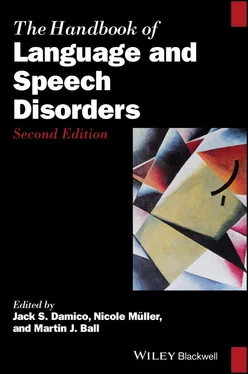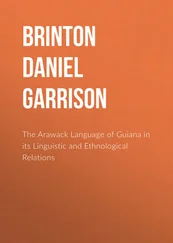Multicultural and multilingual issues (MMI) (diversity) have an age‐long standing in the history of humanity, but it is a neonate field in terms of research, study, and clinical service tradition; it is even more pristine where its instruction is concerned. As the significance and relevance of the topic rightfully gains increasing recognition, the Office of Multicultural Affairs of the American Speech and Hearing Association (ASHA) advocates specific guidelines with a theoretical and a practical component to be infused in both principle and practice when diversity is at play. A vital part of MMI infusion begins (and ends!) in the professional education of service providers, like speech‐language pathologists (SLPs), an education that ought to include both existing knowledge and contemporary advances in ongoing research. There is a multitude of resources that may be used to this end.
The present chapter highlights diversity considerations in the clinical practice of speech and language disorders (SLDs), aiming to reaffirm the necessity of making such considerations stand out in the minds of clinical service providers not as an elective facet of their agenda, but as an imperative concern. It appears that although diversity considerations are continually building momentum in academic circles, the impact of such considerations is only superficially affecting SLP expertise and practice around the world. Enhancing the cultural responsiveness of clinical service providers, who are at the far end of the gamut between research and practice, is vital for two reasons. First, research assumes practical relevance for clinicians, and the perpetually scrawny link between the two is somewhat strengthened. Second, clinical practice becomes more targeted and relevant for the CLD populations in the globalized and diversified society we all share. The aim here, thus, is to reach out to service providers, both those currently incubating in educational systems worldwide but also those already in professional service contexts via the means of, for example, continuing education. As lifelong learning is reinstated as critical, associations have the potential also to be one of the main providers of adult professional education.
The way to go about this, which is also represented in the main thematic divide of this chapter, is by a two‐way process involving the consolidation and reflection of knowledge. These two related standpoints engage facts and findings (theory/research/policies) as well as each individual SLP’s insights into how well one can prepare oneself to bring appropriate assessment and intervention skills into the clinic—skills that meet the needs of CLD groups and that may need to go far beyond just the inclusion of the known and tested procedures. This second aspect is indispensable because there will always be gaps in what an SLP knows, especially given the non‐existent methods of diffusion (i.e., ways to bring empirically tested treatments [ETTs] into clinical service delivery) (American Speech and Hearing Association [ASHA], 2010), the unanswered questions in research, and the gaps in knowledge in general, while the demands of “underserved and unserved” clients “struggling to be heard and seen” (Cheng, 2014) are on the increase. Also, the distance between the two ends on the research and practice continuum will start diminishing further if/when the SLP is willing to assume new‐fangled roles like those of the ethnographer, the linguist, the person that seeks and finds answers, in other words, the researcher.
This chapter is organized in two broad thematic sections dealing with theoretical and practical aspects relating to MMI instruction in SLDs. The subsections are as follows: Some facts; What is there and what is missing; Identifying an MMI curriculum; Relevant theory; Relevant applications; Issues in cultural competence; Concluding statements.
As the world becomes a smaller place in an ever‐continuing process of cross‐border integration across nations (Robertson & Scholte, 2007), there is also an upsurge of speech, language, and communication needs in clinical practice rooms that are asked to cater for CLD groups, such as migrants, refugees, and established ethnic and racial minorities; also, the existence of special groups like LGBT communities (4.5% of the US population; Newport, 2019), the deaf community and war veterans, among others, should not be overlooked when discussing diversity. Verdon (2015) investigated practice with CLD families in 14 sites across four continents and five countries. Verdon, McLeod, and McDonald (2014) showed that one fifth of SLP services in Australia are provided for a non‐English language. Though there are no decisive statistics on the provision and uptake of speech and language services to CLD populations, sporadic studies internationally provide evidence in support of the claim (e.g., Fernandes & Wertzner, 2014; Leirbakk, Magnus, Torper, & Zeanah, 2019; Scharff Rethfeldt, 2019). The prevalence of speech impairment among CLD individuals is usually projected based on the general population with little reliable data; however, most minorities are also in low/middle income settings (Battle, 2012).
More than half of the world’s population is being raised bilingually (Marian & Shook, 2012). The multicultural and multilingual nature of the world that we live in is indisputable. To exemplify, in Europe there are 87 distinct peoples among whom 33 constitute the predominant populations of countries, and the remaining 54 are ethnic/linguistic minorities—14% of the entire European population (Pan & Pfeil, 2003). There are 288 living languages in Europe (Ethnologue, 2019); about 90% of them fall within three large branches of Indo‐European languages, while the remaining fall in Indo‐European languages subgroups, and some are non‐Indo‐European languages. “Just over half of Europeans (54%) are able to hold a conversation in at least one additional language, a quarter (25%) are able to speak at least two additional languages and one in ten (10%) are conversant in at least three; 44% of Europeans can read a newspaper/magazine in a foreign language” (Eurobarometer, 2012, pp. 5–6). Most common foreign languages are English (38%), French (12%), German (11%), Spanish (7%), and Russian (5%), and spoken at a level better than basic skills (Eurobarometer, 2012, p. 6). In 2015, 75,000 refugees arrived in the European Union (EU), starting the European migrant crisis, with asylum‐seekers and economic migrants coming from Muslim‐majority countries in regions south and east of Europe, including the Greater Middle East and Africa (Eurostat, 2019); this fact contributes to changing European demographics. Based on the European Union Committee of Speech and Language Therapists/Logopedists (CPLOL) ( https://cplol.eu/about‐cplol/the‐organisation.html), there are 80,000 logopedists in 31 professional organizations in 30 European countries.
In the US, 41% of the population constitutes what are known as minority groups that exhibit racial, ethnic, cultural, and linguistic diversification (i.e., African American, Latino/Hispanic, Asian, Middle Eastern, First Nations, Pacific Islanders), a number that by the year 2060 is expected to increase to 60%; though English is the predominant language and Spanish follows up next, more than 350 languages are spoken in US homes, and “approximately 35 of these languages [are] spoken by at least 100,000 individuals over the age of 5” (see Hyter & Salas‐Provance, 2019, pp. 1–5); more than 59.5 million people speak a non‐English language at home, according to the US Census. There is a change taking place in US demographics, with the numbers of those US‐born decreasing and those non‐US‐born substantially increasing (Colby & Ortman, 2015). Also, while the general US population is older rather than younger, and those younger tend to be non‐European, non‐white, and non‐monolingual, it is a stark contrast that the current SLP workforce in the US consists of predominantly white monolingual females (e.g., Williams & McLeod, 2012); actually only 6% of SLPs in the US are certified bilingual service providers (ASHA, 2018).
Читать дальше












